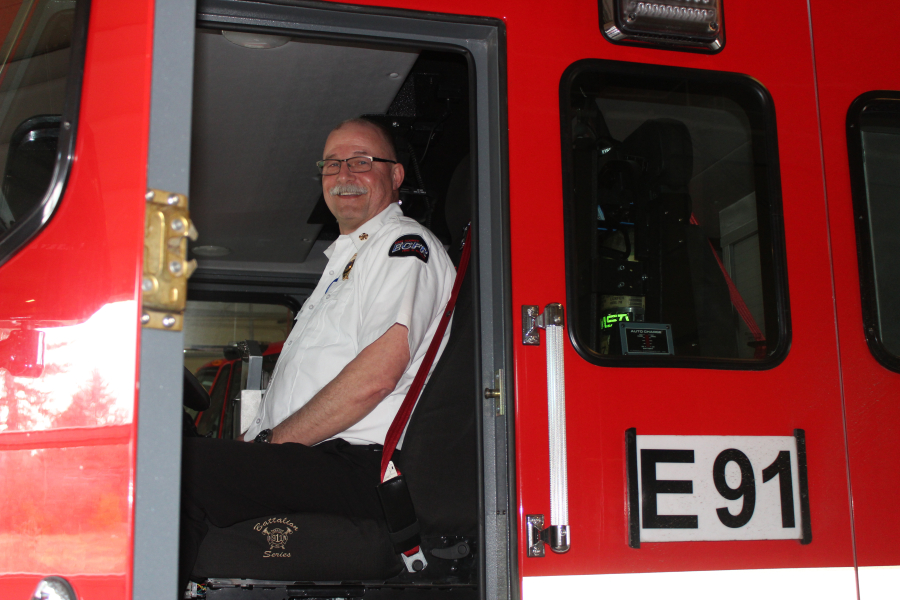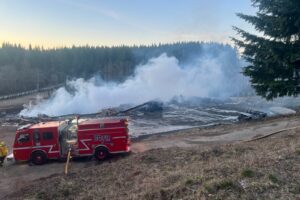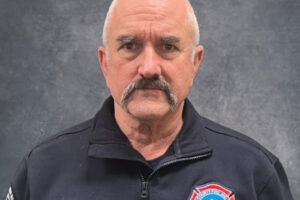If you’d asked a 30-year-old Mike Carnes what he’d be doing at age 59, he may have theorized “managing the Pendleton Woolen Mills” or “playing with my grandchildren” or maybe “taking camping trips with my wife.”
It’s doubtful Carnes would have guessed he’d be where he is now: running the East County Fire and Rescue (ECFR) district as a fire chief.
“I always wanted to be a firefighter,” Carnes said recently during an interview with The Post-Record at the fire district’s headquarters, Station 91, located near Grove Field airport in northern Camas. “But I never thought I’d be chief.”
The ECFR board of commissioners voted in mid-December 2018 to terminate a shared fire chief agreement with Camas-Washougal Fire Department (CWFD), citing a need for cost savings in light of voters’ rejection of ECFR’s levy lid lift in the November 2018 midterm election. On Feb. 1, CWFD Fire Chief Nick Swinhart stepped away from his role leading ECFR and Carnes, then the fire district’s deputy fire chief, took the reins.
Carnes didn’t even become a firefighter until he started volunteering with ECFR in 1997. At that point in his life, Carnes was a 37-year-old married father of three young girls and worked full-time as a manager at Pendleton Woolen Mills in Washougal. He and his wife, Cathy, had relocated from the small, northeastern Oregon town of Pilot Rock with their children the year before and Cathy encouraged her husband to follow his dream and sign up as a volunteer firefighter.





